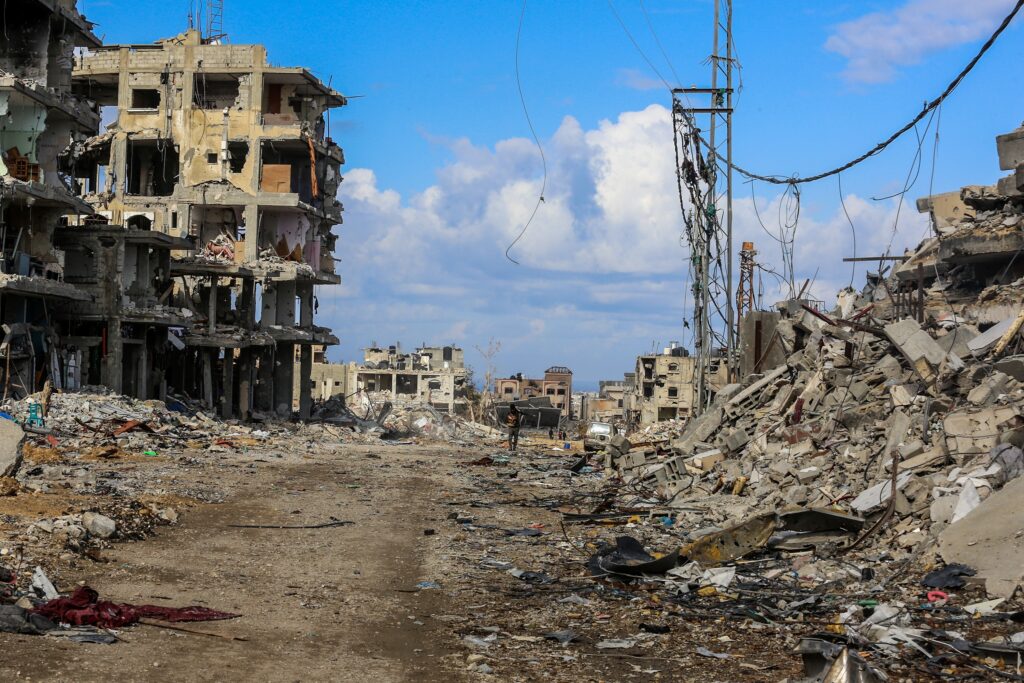A temporary ceasefire is being observed in Gaza after 15 months of conflict between Hamas and Israel. Tens of thousands of Palestinians have been killed and many more injured. The targeting and destruction of health care facilities along with the detention and murder of health care workers has left an already health-poor population even more at risk of morbidity and mortality due to chronic disease.
The most recent report from the Director General of the World Health Organization (WHO) estimates around 350 000 people in Gaza live with chronic disease and need access to services unavailable inside the Gaza Strip. The largest group are cancer patients requiring chemotherapy, which is currently unavailable due to the blockade of aid, or radiotherapy that necessitates a permit to travel outside of Gaza. It is estimated that 452 600 people have mental health issues.

I was selected as part of an emergency medical team with Medical Aid for Palestinians (MAP) for deployment to Nasser Medical Complex (more commonly known as Nasser Hospital) in southern Gaza for one month in October 2024. As I waited in my Amman hotel for final approval to enter, my phone vibrated continuously, receiving message requests to take antihypertensives, antipsychotics, iron tablets, azathioprine, insulin and multivitamins for relatives. Clinicians on the ground, local and international, were asking for Coffee Mate (powdered milk) and Creon, plastic spoons and bone marrow biopsy needles, chocolate and batteries. Each request had to be carefully considered due to the 23 kg, one-bag limit and restrictions on what was allowed in. My luggage was already at capacity with pre-approved medical equipment, textbooks, surgical gloves and sterile gauze. For myself, four pairs of scrubs, a towel, sleeping bag (all of which would remain there), personal clothes to exit Gaza, toiletries, medications and organic beef bone broth. I fulfilled whatever reasonable medication requests that I could.
At around 6 am the next morning, myself and the two other members of my team — UK surgeons, one vascular, one general/colorectal — boarded a coach along with approximately 25 other humanitarian personnel from organisations such as World Food Kitchen, Medecins Sans Frontieres, WHO and UNICEF. The journey by road was peppered with multiple stops for arduous screening and luggage checks en route to the Israeli-controlled Kerem Abu Shalom border crossing and we eventually passed into Gaza after moving into armoured UN vehicles, at around 4:30 pm.
Nasser Hospital, one of the largest hospitals in southern Gaza, was subjected to a week-long siege in February 2024. Multiple buildings, including the dialysis centre, infrastructure including generators and warehouses, and medical equipment were damaged or destroyed. Numerous health care workers and patients were abducted or killed, with many still unaccounted for. A mass grave containing the bodies of around 300 people was discovered after the withdrawal of Israeli forces. The hospital was rendered non-operational until May 2024 when major reconstruction started and is currently described as being “partially functioning”.
Medical deployment
Our first week was a relatively quiet week with no Mass Casualty Events (MCEs) so we could prioritise the types of cases that fill theatre lists daily in Australia: hernia repairs, adenoidectomies, urological procedures. There was an over-representation of advanced obstructing or necrotising cancers (particularly breast and colorectal) and the lack of post-surgical therapies meant that these were mostly palliative operations. Laparoscopic cholecystectomies appeared frequently and there was a high incidence of pancreatitis, which local colleagues attributed to the largely canned diet people were forced to adopt. Fresh produce was mainly available via infrequent aid deliveries because agricultural capacity has been decimated but staff who still had an olive or mandarin tree would bring these treasures to share and supplement the one meal a day provided by the World Food Programme. We also took care of wound debridements, lung decortications and repeat orthopaedic procedures on patients who had been injured during previous attacks.
The hospital day ran from 8 am to 2 pm with staff transported on coaches from surrounding areas and tent encampments. Those remaining after 2 pm would finish their shift the next morning with the hospital transitioning into emergency mode. I would head to the emergency department and help out — the resuscitation team had a steady stream of acute coronary syndromes, status epilepticus, diabetic ketoacidosis and respiratory failure. There are around 180 births per day across Gaza with antenatal care and assessment patchy (grand multiparity was common). A search of the pathology database, only back online since August 2024, revealed that 71.5% of women of childbearing age were anaemic.
An overflow WHO field hospital was set up, near the site of the mass grave, for paediatric medical evacuees from North Gaza. Malnutrition due to food insecurity and untreated malabsorption syndromes was ubiquitous and children with cancer were often in advanced stages, requiring urgent treatment outside of Gaza. We watched with sadness when a convoy of children chosen for medical evacuation to Romania returned to the field hospital having been denied passage by the Israeli military.
For the rest of our deployment, we experienced more frequent, intense MCEs and our work transitioned to managing the casualties of near continuous shelling and air strikes, often occurring in the designated “Humanitarian Zone”, with the majority of these being children.
Conclusion
A temporary 6-week ceasefire will allow the people of Gaza to breathe and international organisations to address immediate needs safely. However, Palestinian lives will remain at risk, critically endangered by illness, disease and starvation and a lack of access to adequate health care. The achievement of health equity for Palestinian people will only happen when there is a permanent ceasefire. The root cause of the health and humanitarian needs of Palestinians needs to be respected and prioritised; health care workers, patients and health facilities protected; and those responsible held accountable for violations of international law.
Dr Saira Hussain is a consultant anaesthetist working on the Central Coast, NSW.
The statements or opinions expressed in this article reflect the views of the authors and do not necessarily represent the official policy of the AMA, the MJA or InSight+ unless so stated.
Subscribe to the free InSight+ weekly newsletter here. It is available to all readers, not just registered medical practitioners.
If you would like to submit an article for consideration, send a Word version to mjainsight-editor@ampco.com.au.

 more_vert
more_vert